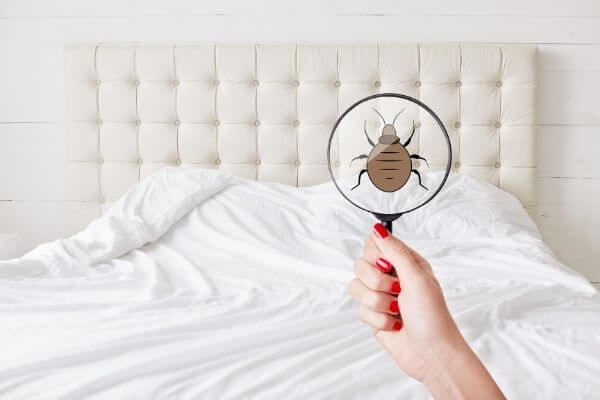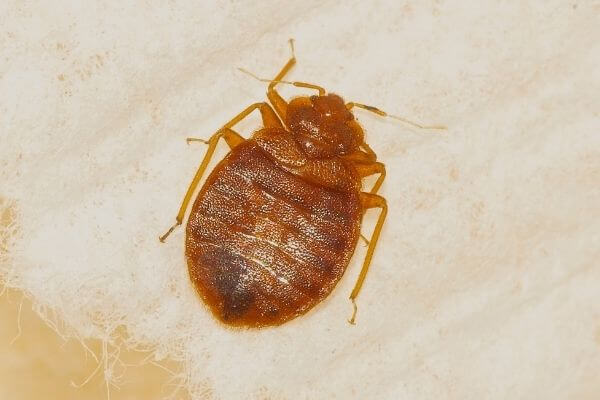It can be hard to know how to check for bed bugs. That’s what makes them such pesky pests. They’re so tiny that it can be hard to spot them with the naked eye, and they’re also quite adept at hiding in furniture and clothes.
Bed bugs are more than just a nuisance. Bed bugs bites can lead to health problems, allergic reactions, stress, and infections. If an infestation grows large enough, you’ll need to look into a pest control solution as soon as possible. Of course, the goal is to avoid an infestation entirely.
When you move into a new home, buy used furniture, or notice signs of infestation, the first thing you should do is check for bed bugs yourself. Keep reading, and we’ll tell you six ways to find bed bugs in your home.
1. Check For Bed Bugs Carefully
Bed bugs can fit in cracks and crevices as thin as a debit card. Make sure you search for them with a flashlight in hand. Use a thin, edged object like a paint scraper or index card to scrape along surfaces.
Look in every possible crevice of your home, but pay special attention to cloth-covered furniture. That’s usually their favorite place to hide. Carpets and baseboards are also crucial to your search. Bed bugs often hide along the outskirts of rooms.
Searching carefully also means protecting yourself. Wear protective gloves and clothing that covers your whole body and wash your clothes in hot water after searching.
2. Take Things Apart
You can’t be too thorough when it comes to checking for pests. Common bed bug hiding spots include inside and underneath furniture. Take the cushions off of your couch and the sheets off of your bed. Make sure also to lift your carpet (if possible) and check underneath it.
Bed bugs love warm places. They also only like to travel 5-20 feet from their hiding places. For these reasons, any area where you often sit or lie down can attract them. Mattresses and beds, bed frames, office chairs, and couches are the things you should be vigilant about taking apart and checking.
3. Look For the Signs
When you search for these pests, it’s essential to look for other signs besides the bugs themselves. Secondary signs of a bed bug infestation include:
- Small spots of blood on your mattress
- Clusters of small red bites on your skin
- Itchy skin even without visible bites
- Discarded bug skin
- Translucent bed bug eggs
- Black or rust-colored clumps of bed bug feces
Often, the signs of a bed bug infestation are more noticeable than the bugs themselves. If you spot bites on your skin or blood on your sheets, take action immediately!
4. Correctly Identify Bed Bugs
So, you’ve been searching, and you found a live bug. How do you know it’s a live bed bug and not another common household pest?
When dealing with an infestation, it’s important to identify which pest is giving you trouble correctly. If you manage to trap a live bug, try to stick it between two pieces of tape so you can safely examine it. Adult bed bugs are about one-quarter of an inch long. Nymphs, however, can be smaller.
To identify a bed bug, check for six legs and either a brown or red coloring depending on when it last fed. If a bed bug has eaten a blood meal recently, it will be red. If a bed bug has not fed in a while, it will be a lighter shade of brown.
5. Check Uncommon Hiding Places
When an infestation is advanced, you can find bed bugs in some unlikely places. Your first course of action should be to look in beds, couches, and other furniture. However, furniture is only one of many places that you might find these pests.
They can hide inside more unusual places like clocks, smoke detectors, or behind electrical outlets. They can even bury inside picture frames. Bed bugs do move around, and the infestation may not be dire yet. However, take action as soon as you confirm that there are bed bugs in your home.
6. Check At the Right Time
Bed bugs are more active at night. They are generally considered nocturnal and are likely to stay that way if you have a regular sleep schedule. If you are often gone at night and home during the day, the bed bugs in your home will adapt to that schedule.
You’re most likely to find bed bugs at the time of day in which you sleep. However, if you notice a bite or dropping appear during daylight hours, take that opportunity to go looking around.
Keep Your Home Pest-Free
Now that you have six helpful tips on how to check for bed bugs keep an eye out in your home. The earlier an infestation is detected, the easier it will be to treat. If you identify a bed bug in your home, take pest control action immediately.
If you are looking for a safe and non-toxic way to kill bed bugs, the Cryonite System is a great tool to have on hand.


